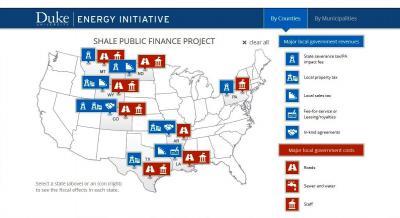Oil and gas development from shale fields leads to high-paying jobs and a boost to property taxes, sales taxes and state-collected severance taxes or fees. Do they outweigh the increased costs related to road damage heavy truck traffic, water and sewer service expansion, government staffing and other needs brought on by rapid population growth?
An analysis of data from communities surrounding 10 oil and gas "plays" from September 2013 through February 2014, in Arkansas, Colorado, Louisiana, Montana, North Dakota, Pennsylvania, Texas and Wyoming found that the net impact of recent oil and gas development has been positive for local public finances.
Major revenue sources increased and some local governments also partner with oil and gas companies to help maintain roads, an approach that helped reduce expenses associated with heavy truck traffic in states including Arkansas, Colorado and Pennsylvania.
New costs for local governments associated with oil and gas development, include damage to

A still image from an interactive map built by the research team which enables viewers to explore the study's findings about shale gas revenue and demand for public services around the country. The interactive map can be found here: http://energy.duke.edu/shalepublicfinance. Credit: Duke University Energy Initiative
"The fiscal effects for local governments tend to vary from state to state, but we found that for most of them new revenues were outweighing new demand for services," said Richard Newell, Professor of Environmental Economics at Duke University.
The research is a snapshot of the fiscal impact to date in the eight states and does not examine the long-term economic impact to governments and the communities they serve, a question the authors say is important and needs additional study.
Newell and Daniel Raimi found net positive fiscal effects in regions where oil and gas booms were ongoing or had slowed in recent years, as well as in regions that experienced different scales of activity. This includes local governments in diverse regions where population density and government capacity vary substantially.
"One of the key questions is how these fiscal effects change over time," said Raimi, an associate in research with Duke's Energy Initiative. "In very rural areas, some local governments have faced challenges when development first surges. In many cases, those challenges faded over time. In most other areas, we found net positive or at least roughly neutral financial effects on local government."
"In some parts of North Dakota, populations have doubled, tripled or even quadrupled just in the past few years," Raimi said. "For local governments in these areas, it's hard to keep up with the demand for services, especially costly infrastructure projects such as sewer and water treatment plants."





Comments